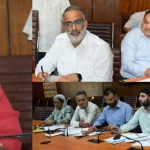Dr. TS KLER
With significant rise in the prevalence of cardiac arrest cases among the young individuals, there is a dire need to raise public awareness. Recent statistics reveal a distressing trend, with cardiac arrest becoming a common cause of death in this age group. As a result, it is crucial for the public to be aware of the causes, signs, and preventive measures associated with this life-threatening condition.
Cardiac arrest is a critical medical emergency wherein the heart ceases to pump blood effectively, leading to the cessation of normal breathing and loss of consciousness. Its onset is often marked by sudden collapse, absence of a pulse, and cessation of breathing. Without immediate intervention, a patient’s chances of survival diminish rapidly, with a fatality occurring within approximately 10 minutes.
The underlying causes of cardiac arrest can vary. In approximately 85% of cases, cardiac arrest is linked to pre-existing heart conditions, such as cardiomyopathy or previous heart attacks. Individuals with reduced heart pumping capacity, characterized by an ejection fraction less than 35%, are particularly susceptible to cardiac arrest. In some cases, cardiac arrest may also be attributed to hereditary heart diseases, including hypertrophic cardiomyopathy, QT prolongation, Brugada syndrome, and arrhythmogenic right ventricular dysplasia. Timely detection of these conditions requires electrocardiography (ECG), echocardiography, and evaluation by a cardiac physician.
Highlighting the urgency of the matter, immediate administration of cardiopulmonary resuscitation (CPR) is the essential initial response to cardiac arrest. Additionally, early defibrillation through electric shocks and the activation of advanced cardiac life support are vital for increasing the chances of survival.
One concerning factor contributing to the rising cases of cardiac arrest in young individuals, especially in India, is the adoption of unhealthy lifestyles. Faulty dietary habits, including the consumption of excessive processed foods, sugars, and high-glycemic carbohydrates, coupled with sedentary routines, increasing obesity rates, tobacco and alcohol use, and elevated stress levels, contribute significantly to the risk of heart disease and heart attacks. Furthermore, recent evidence suggests that inappropriate exercise regimes and the consumption of muscle-building protein supplements can also have detrimental effects on the heart, particularly among those undertaking high-intensity workouts.
Cardiac screenings should be done before engaging in intense physical activities, regardless of age. Professional athletes, marathon enthusiasts, and individuals pursuing high-intensity exercise regimens should undergo ECG, echocardiography, and consult a cardiologist to receive personalized exercise prescriptions aligned with their specific cardiac conditions.
Regarding dietary concerns, individuals must adopt healthier eating habits, including a plant-based diet with a focus on vegetarian options, fish, and lean meats like chicken. Preferably, choose roasted meats over fried preparations and avoid processed foods and excessive carbohydrates. Festive occasions, which are common in India throughout the year, often involve overindulgence in sweets, alcohol, and smoking. It is essential to exercise moderation during these times to maintain cardiovascular health and adhere to a nutritious diet consistently.
To combat the risk factors contributing to cardiac arrest, regular moderate exercise, yoga, meditation, and effective stress management techniques can prove helpful. By embracing a healthy lifestyle, a significant proportion—up to 67-80%—of premature deaths related to cardiovascular diseases can be prevented. Raising awareness about cardiac arrest in young people and providing comprehensive cardiac care is needed to combat this growing health concern.
(Dr. TS Kler is Chairman, Fortis Heart and Vascular Institute, Fortis Hospital, Gurugram)





